The Spicy Secret Behind Korean Cuisine: All About Gochugaru
When it comes to spice, few ingredients pack the punch quite like Korean chili flakes—gochugaru. This vibrant red seasoning is more than just heat; it's the heart and soul of iconic dishes like kimchi and tteokbokki. Whether you're a seasoned chef or a curious home cook, understanding gochugaru can elevate your culinary game and bring authentic Korean flavor to your kitchen.
Table of Contents
- What Is Gochugaru?
- Gochugaru Flavor Profile: Sweet, Smoky, and Spicy
- How to Use Gochugaru in Your Cooking
- Buying Guide: Choosing the Best Gochugaru
- How to Store Gochugaru for Maximum Freshness
- Gochugaru vs. Other Chili Flakes: A Visual Comparison
- Global Dishes That Can Benefit from Gochugaru
- Fun Facts About Gochugaru
- Conclusion
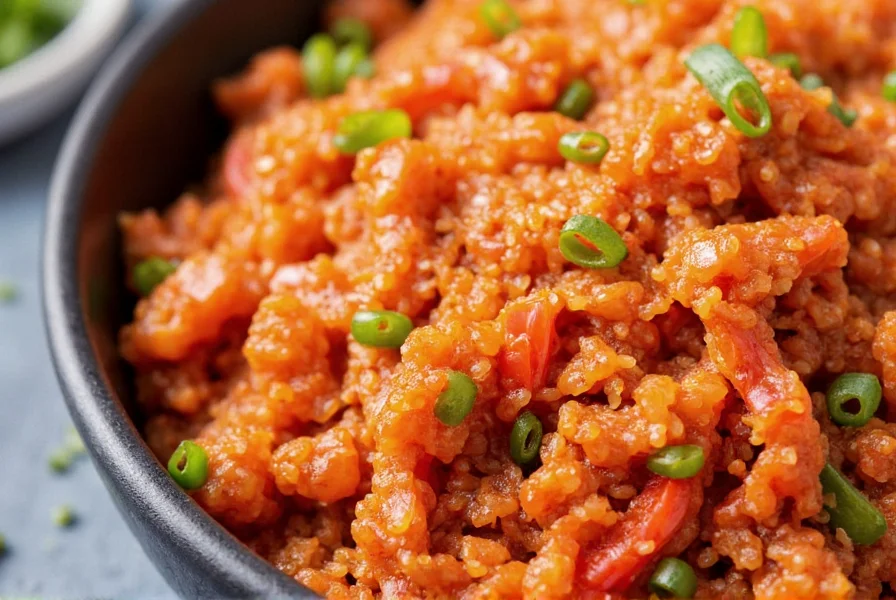
What Is Gochugaru?
Gochugaru is a type of dried chili flake made from sun-dried red chili peppers that are ground into flakes of varying coarseness. Unlike typical crushed red pepper flakes found on American pizza tables, gochugaru has a more nuanced flavor profile—it’s sweet, slightly smoky, and carries a moderate level of heat.
The word “gochu” means chili pepper in Korean, and “garu” translates to powder or flakes. It plays a starring role in many traditional Korean recipes, especially those involving fermentation and long cooking processes.
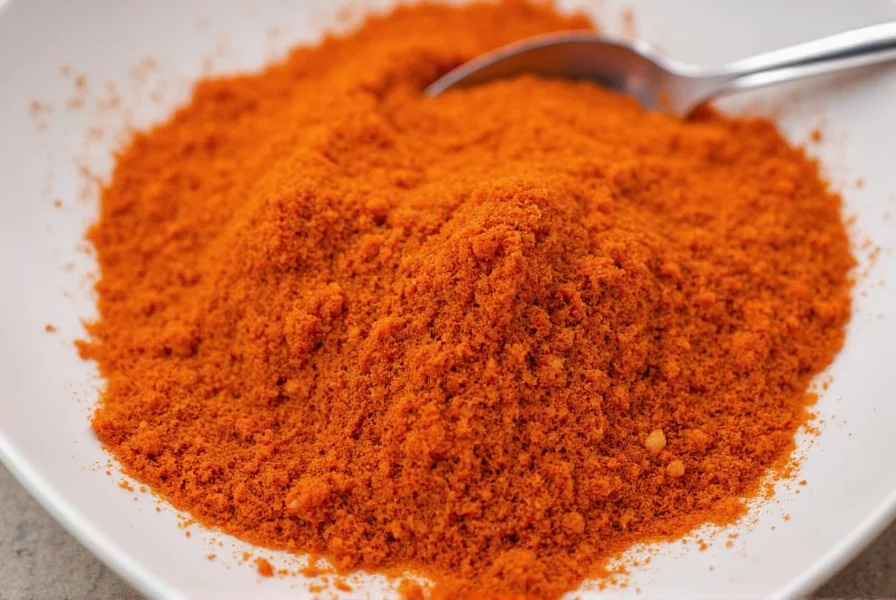
Gochugaru Flavor Profile: Sweet, Smoky, and Spicy
One of the most surprising things about gochugaru is how balanced its flavor is. Here's what makes it special:
- Sweetness: Despite being a chili, gochugaru has a natural sweetness due to the ripening process of the peppers before drying.
- Smokiness: The sun-drying method imparts a subtle smoky note that adds depth to dishes.
- Heat Level: On the Scoville scale, gochugaru typically ranges between 4,000–8,000 SHU, placing it around the same heat as cayenne pepper but with more complexity.
Flavor Comparison Table
| Spice | Heat Level (SHU) | Main Flavor Notes | Common Uses |
|---|---|---|---|
| Gochugaru | 4,000–8,000 | Sweet, Smoky, Earthy | Kimchi, stews, sauces |
| Cayenne Powder | 30,000–50,000 | Sharp, Hot, Pungent | Spice blends, soups |
| Crushed Red Pepper | 15,000–20,000 | Bitter, Peppery | Pizza, pasta, chili oil |
| Paprika | 500–1,000 | Sweet, Mild | Garnish, paprikash, rice dishes |
How to Use Gochugaru in Your Cooking
Gochugaru is incredibly versatile. Here are some classic and creative ways to use it:
- Korean Kimchi: The star ingredient in napa cabbage kimchi, where it balances salt, funk, and fermentation.
- Stews & Braises: Adds depth and warmth to dishes like kimchi jjigae or dubu jjigae.
- Spicy Marinades: Mix with soy sauce, sesame oil, garlic, and honey for a bold Korean-style marinade.
- DIY Gochujang Substitute: Blend gochugaru with miso, molasses, and vinegar for a quick alternative.
- Powdered Seasoning Boost: Sprinkle on popcorn, roasted nuts, or fries for a spicy-savory kick.
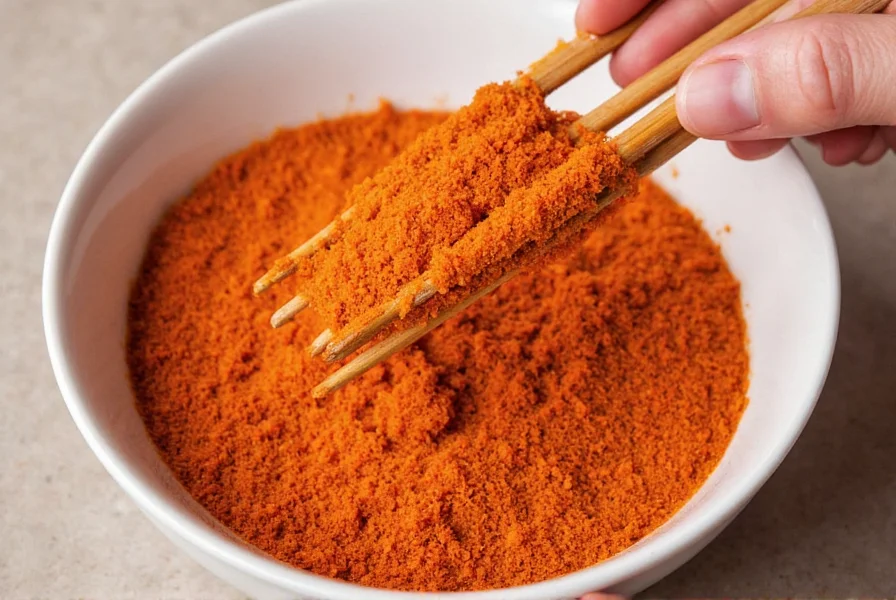
Buying Guide: Choosing the Best Gochugaru
Not all gochugaru is created equal. When shopping, consider these factors:
Texture & Coarseness
- Fine powder: Good for sauces and soups where you want a smooth texture.
- Mixed flakes: Ideal for kimchi and other dishes where both color and texture matter.
Quality Markers
- Bright red color: Indicates freshness and quality processing.
- No additives: Look for pure gochugaru with no preservatives or artificial coloring.
Top Brands to Consider
| Brand | Texture | Heat Level | Best For |
|---|---|---|---|
| Hansikgongjak | Mixed flakes | Moderate | Authentic kimchi making |
| Daesang | Fine powder | Medium-high | Cooking and marinades |
| Samyang | Coarse flakes | High | Spicy tteokbokki lovers |
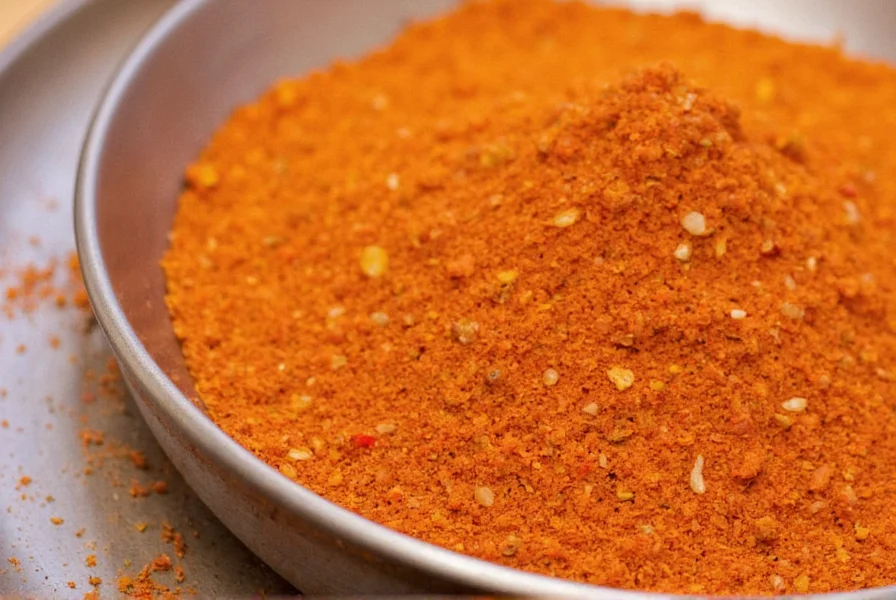
How to Store Gochugaru for Maximum Freshness
To keep gochugaru at its best:
- Airtight container: Keeps moisture out and prevents oxidation.
- Cool, dark place: Sunlight and heat degrade flavor and color.
- Freeze for longevity: Especially if you bought a large batch, storing it in the freezer preserves potency for up to a year.
Gochugaru vs. Other Chili Flakes: A Visual Comparison
Curious how gochugaru stacks up against other chili products? Here’s a side-by-side look:
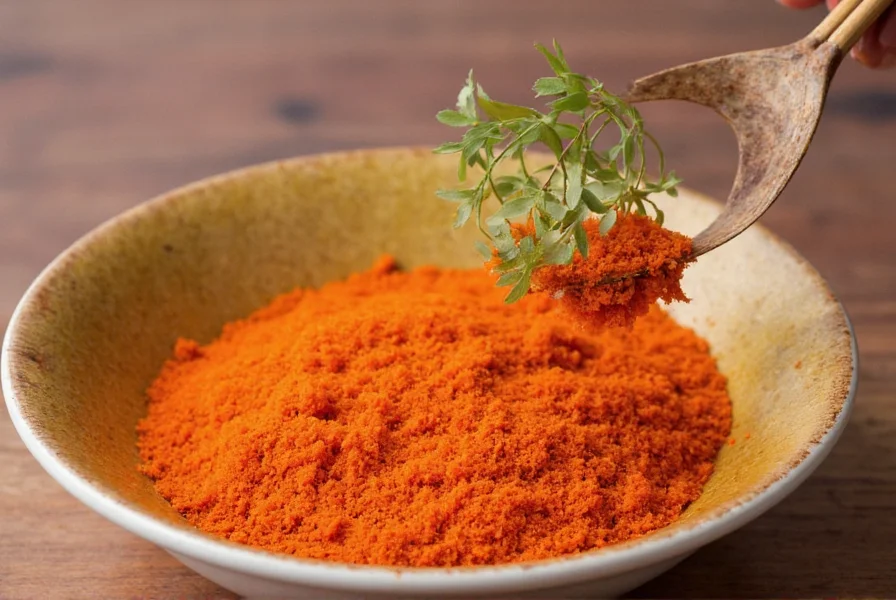
Global Dishes That Can Benefit from Gochugaru
Gochugaru isn’t just for Korean cuisine! Try it in these unexpected global dishes:
- Mexican Mole: Adds smoky heat and deepens the flavor layers.
- Italian Pasta Arrabbiata: Substitute part of the crushed red pepper with gochugaru for added sweetness.
- American BBQ Rubs: Works well in dry rubs for ribs or grilled chicken.
- Indian Chutneys: Enhances chutney complexity when blended with tamarind and jaggery.
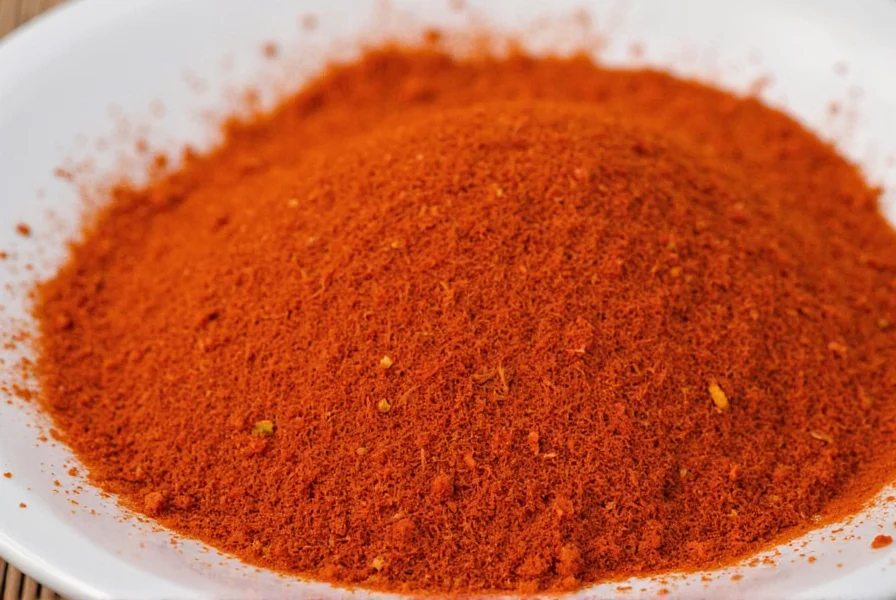
Fun Facts About Gochugaru
Let’s wrap this up with some trivia about Korea’s favorite spice:
- In the past, gochugaru was used not only in food but also in medicine to treat colds and improve circulation.
- It became widely popular in Korea after the 16th century when chili peppers were introduced by Portuguese traders.
- Some regions in Korea produce regional varieties of gochugaru, such as Jinju gochugaru, known for its extra sweetness.
- Koreans consume over 10,000 tons of gochugaru annually—mostly for homemade kimchi!
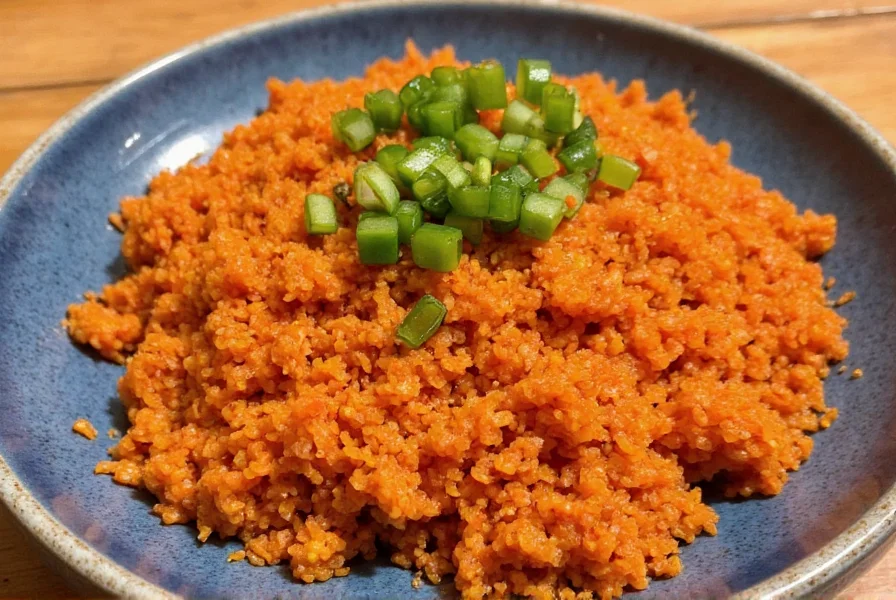
Conclusion
Gochugaru is more than just a spice—it's a cultural icon of Korean cuisine. With its complex flavor, versatility in the kitchen, and deep roots in tradition, it’s worth keeping a jar in your pantry. Whether you’re making classic kimchi or spicing up your next stir-fry, gochugaru brings a unique blend of heat, sweetness, and smokiness that’s hard to replicate with any other ingredient.
Now that you’ve unlocked the secret behind Korea’s fiery magic, why not grab a bag of gochugaru and start experimenting today? You might just find your new favorite flavor enhancer.











 浙公网安备
33010002000092号
浙公网安备
33010002000092号 浙B2-20120091-4
浙B2-20120091-4